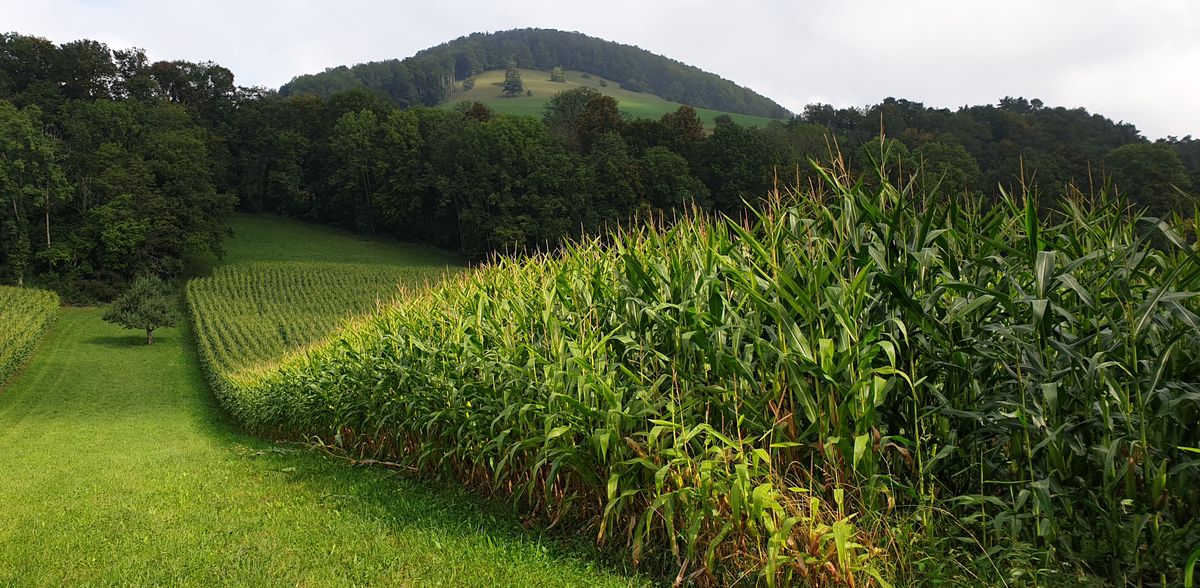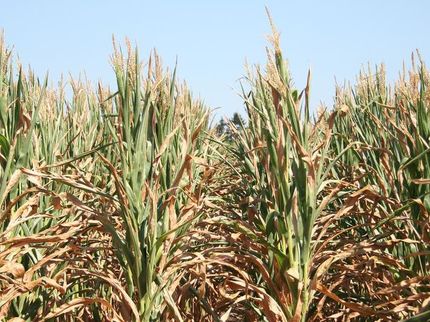Corn reduces arsenic toxicity in soil
When crops grow in arsenic-contaminated soil, this toxic element accumulates in the food chain. A study involving the University of Basel has now discovered a mechanism used by corn plants to reduce arsenic uptake: the key factor is a special substance released into the soil by the roots.
Arsenic is a toxic metalloid of natural origin. Arsenic-contaminated soils and waters are found all over the world, especially in southeastern Asian countries like Bangladesh, Vietnam, and China. Also, Switzerland has a few natural hot spots where arsenic is found in above-average concentrations. An example is soil at Liesberg in the canton of Baselland.
“The particular problem for plants is that arsenic behaves chemically similar to phosphorus,” says Professor Klaus Schlaeppi of the Department of Environmental Sciences at the University of Basel. Phosphorus is an important nutrient that plants take up through special transport channels in their roots. “The arsenic enters the plants through these channels.” As a result, more and more of the toxic substance accumulates in the biomass and gets into the food chain. On the long run, this negatively affects human health. High arsenic exposure can cause neurological damage and cancer, for example.
Roots release an antidote
But as Schlaeppi's team has now reported in the scientific journal PNAS, corn reduces arsenic toxicity through compounds known as benzoxazinoids. These substances are produced by most plants in the botanical group of grasses, which also includes corn and wheat. Corn produces particularly large quantities of benzoxazinoids, which are also released into soil through the root system. “There was already some evidence that corn takes up less arsenic than other plant species,” says Schlaeppi.
To test this hypothesis, the researchers grew corn plants in two types of soil: without arsenic and with high levels of arsenic. They performed the same experiment in parallel using corn plants that cannot produce benzoxazinoids because of a genetic defect. Schlaeppi performed these experiments in collaboration with the research groups of Professor Adrien Mestrot and Professor Matthias Erb at the University of Bern.
Mitigating arsenic toxicity
The result was unambiguous: benzoxazinoid-producing corn grew better in the arsenic-containing soil and accumulated significantly less arsenic in its biomass than the corn that did not exude benzoxazinoids. When the researchers mixed benzoxazinoids into the arsenic-containing soil, the mutant plants were also protected from arsenic toxicity. “This provided the proof that the presence of benzoxazinoids in soil reduced arsenic uptake into plants,” says Schlaeppi.
ext, the researchers wanted to find the underlying mechanism causing this effect. Analyses of the root microbiome indicated that bacteria and fungi were not involved. However, chemical soil analyses showed that a particularly toxic form of arsenic disappeared when benzoxazinoids are present. “This indicated that the benzoxazinoids transform arsenic in such a way that it can no longer be taken up through the root.” What chemical processes are involved is currently still unclear.
Further experiments showed that the positive effect of benzoxazinoids in soil persisted for a long time: even a second generation of corn still benefited from the benzoxazinoids discharge of the first generation.
“One application of these findings would be to cultivate at arsenic-contaminated locations plant varieties that release more benzoxazinoids,” says Schlaeppi. Hyper-emitting plants could be generated through classic breeding or targeted genetic modifications. “This way we could be more certain that less arsenic is entering the food chain.”
Original publication
Veronica Caggìa, Jan Wälchli, Gabriel Deslandes-Hérold, Pierre Mateo, Christelle A. M. Robert, Hang Guan, Moritz Bigalke, Sandra Spielvogel, Adrien Mestrot, Klaus Schlaeppi, Matthias Erb; "Root-exuded specialized metabolites reduce arsenic toxicity in maize"; Proceedings of the National Academy of Sciences, Volume 121, 2024-3-21
Most read news
Original publication
Veronica Caggìa, Jan Wälchli, Gabriel Deslandes-Hérold, Pierre Mateo, Christelle A. M. Robert, Hang Guan, Moritz Bigalke, Sandra Spielvogel, Adrien Mestrot, Klaus Schlaeppi, Matthias Erb; "Root-exuded specialized metabolites reduce arsenic toxicity in maize"; Proceedings of the National Academy of Sciences, Volume 121, 2024-3-21
Organizations
Other news from the department science

Get the food & beverage industry in your inbox
By submitting this form you agree that LUMITOS AG will send you the newsletter(s) selected above by email. Your data will not be passed on to third parties. Your data will be stored and processed in accordance with our data protection regulations. LUMITOS may contact you by email for the purpose of advertising or market and opinion surveys. You can revoke your consent at any time without giving reasons to LUMITOS AG, Ernst-Augustin-Str. 2, 12489 Berlin, Germany or by e-mail at revoke@lumitos.com with effect for the future. In addition, each email contains a link to unsubscribe from the corresponding newsletter.
































































